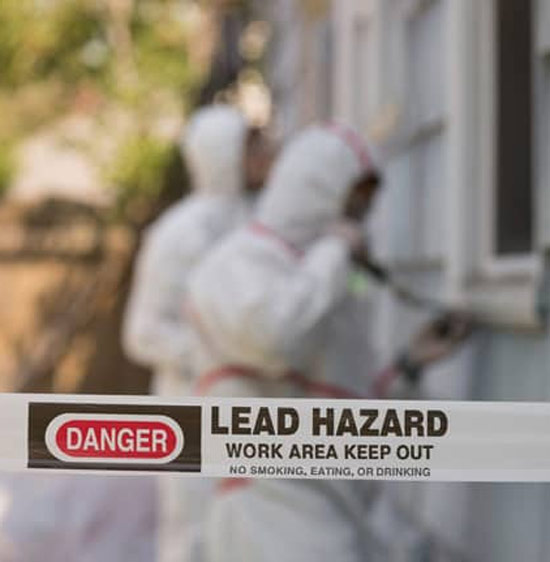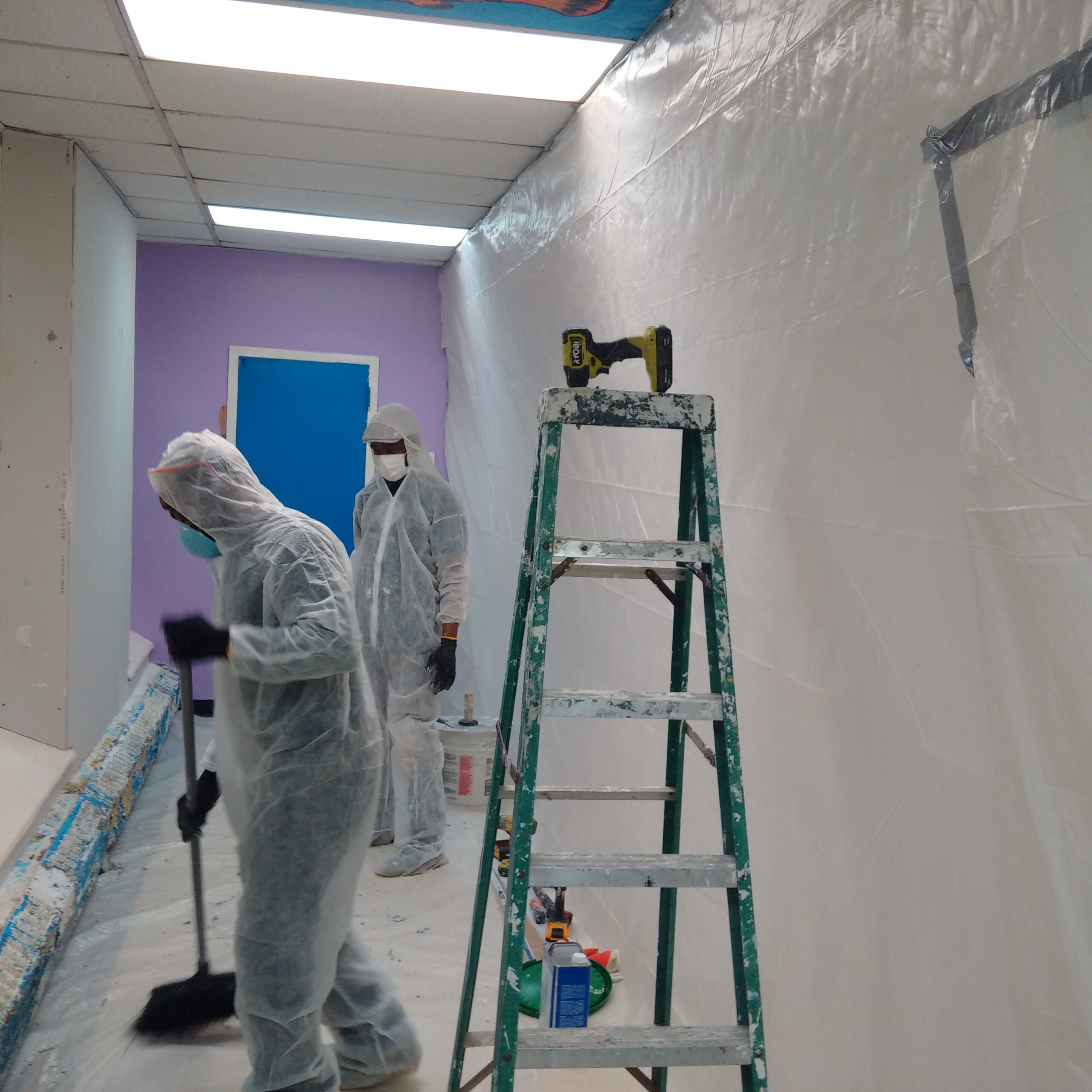Step-by-Step Process for Effective Lead Violation Remediation
Following this, adherence to federal and state regulations is extremely important to developing an effective removal plan. The real removal calls for competent workers to apply these strategies while purely adhering to safety procedures. What takes place after the removal is finished?

Discovery and Evaluation
Detection and analysis are essential actions in the removal of lead infractions. To make sure an effective removal procedure, it is vital to carry out a complete evaluation of the setting where potential lead direct exposure exists. The initial phase of detection entails identifying sources of lead contamination, which can be found in paint, pipes, soil, and dust. Making use of innovative diagnostic tools such as X-ray fluorescence (XRF) analyzers and atomic absorption spectroscopy (AAS) can supply specific measurements of lead focus.
This consists of evaluating the extent and severity of contamination, as well as determining populations at risk, especially kids and expectant females. The collected information ought to be diligently documented to support the development of an efficient removal approach.
Furthermore, it is critical to focus on locations with the highest levels of contamination and those that position the best wellness risks. Efficient communication with stakeholders, consisting of homeowner, homeowners, and public health and wellness officials, is important for ensuring that all events are educated about the findings and the succeeding actions required for remediation. This first discovery and assessment phase lays the foundation for a successful lead infraction removal process.

Legal and Governing Conformity
Navigating the landscape of legal and governing conformity is an essential facet of effective lead infraction remediation. Compliance makes sure not just the security of afflicted populations however additionally the trustworthiness and legal standing of the organization liable for removal. Rules governing lead contamination are multifaceted, incorporating government, state, and regional regulations. At the federal degree, the Epa (EPA) sets stringent requirements under the Hazardous Substances Control Act (TSCA) and the Lead-Based Paint Improvement, Repair Work, and Painting Guideline (RRP Guideline)
State and regional policies can differ, frequently enforcing additional commitments or more strict criteria. Therefore, a comprehensive understanding of all appropriate legal structures is important. This entails careful documents of all removal tasks to show compliance. Failing to follow these regulations can lead to extreme fines, including large fines, lawsuit, and reputational damages.
Engaging legal specialists focused on ecological law can promote browsing these complexities. Normal training and certification for all workers included in the remediation process are also mandatory to ensure adherence to safety and security and regulative standards. By focusing on legal and governing conformity, companies can efficiently reduce risks and attain a successful removal result.
Preparation the Removal
Properly planning the remediation of lead offenses starts with a complete evaluation of the infected website. This data-driven technique makes sure that remediation initiatives are appropriately targeted and reliable.
As soon as the contamination is mapped, a risk assessment ought to be carried out to evaluate prospective health and wellness risks to people and the environment. Lead Violation Removal in NYC. This evaluation must take into consideration elements such as exposure pathways, population susceptability, and eco-friendly influences. The insights gathered will create the basis for picking an ideal removal approach
Ultimately, establishing clear, possible purposes for the removal job is essential. These goals need to align with governing standards and stakeholder assumptions to make certain conformity and community acceptance. Creating a detailed removal strategy that outlines approaches, timelines, and source allowance will certainly assist in an organized approach to the cleaning procedure.
In addition, it is necessary to involve with stakeholders early and maintain clear communication throughout the planning stage. This consists of notifying neighborhood communities, getting needed licenses, and collaborating with governing firms to ensure all lawful and step-by-step needs are satisfied. A well-crafted remediation plan not just attends to the contamination successfully however also constructs count on and cooperation amongst all celebrations involved.
Implementing the Remediation
With a well-structured remediation strategy in position, the emphasis shifts to the real execution of the removal tasks. This phase find more information entails activating the necessary sources, including knowledgeable workers, customized tools, and high-grade products. Begin by plainly delineating functions and responsibilities to make certain accountability and smooth coordination amongst group members.
This includes setting up containment locations to protect against lead dust and debris from spreading, as well as utilizing air purification systems to keep air top quality. Utilize techniques such as wet scuffing, chemical removing, or encapsulation, depending on the intensity and area of the contamination.
Throughout the removal procedure, conduct routine inspections and air quality keeping track of to guarantee compliance with regulative requirements. Efficient communication with stakeholders, including homeowner and owners, is crucial to maintain them educated of progression and any kind of unanticipated advancements. By thoroughly complying with why not try here these steps, the remediation activities can be implemented successfully and properly, eventually mitigating lead dangers.
Post-Remediation Techniques
Post-remediation techniques play a crucial role in ensuring the lasting success of lead infraction remediation initiatives. These approaches include ongoing monitoring, upkeep, and neighborhood education to stop future lead direct exposure and ensure a secure setting.
First, routine surveillance is crucial. This includes periodic screening of the previously affected locations to guarantee that lead degrees stay within safe restrictions. Homeowner need to develop a routine for these examinations, ideally in cooperation with licensed ecological experts.

Third, enlightening the neighborhood plays a crucial function in maintaining the benefits of removal. Locals and property supervisors should be notified about the dangers of lead direct exposure and the finest techniques for my blog preserving a lead-safe setting. Workshops, informational handouts, and community meetings can be reliable tools for distributing this details.
Final Thought
Effective lead violation remediation calls for a comprehensive, methodical strategy including discovery and analysis of contamination, adherence to legal and regulative criteria, meticulous planning, and efficient implementation of removal efforts. Post-remediation methods, consisting of continuous tracking and neighborhood education and learning, are important to sustain a lead-safe atmosphere. Cooperation with ecological professionals guarantees continuous conformity and defense of public health. This methodical process underscores the importance of thoroughness and watchfulness in resolving and minimizing lead contamination.